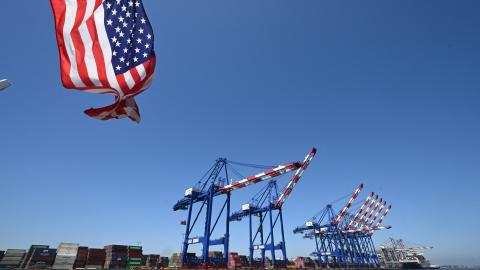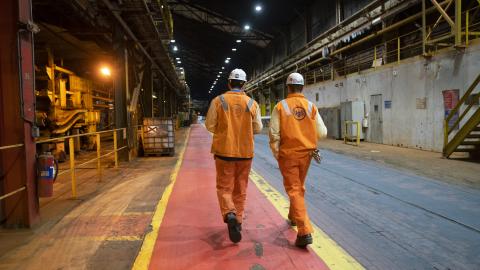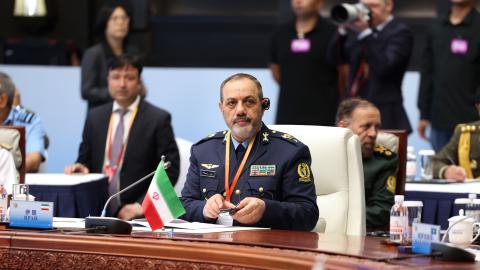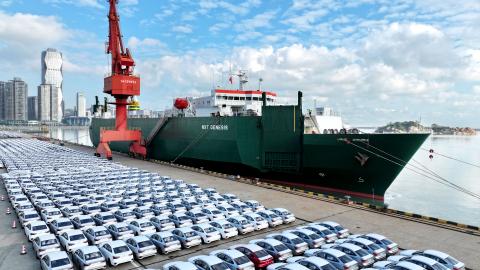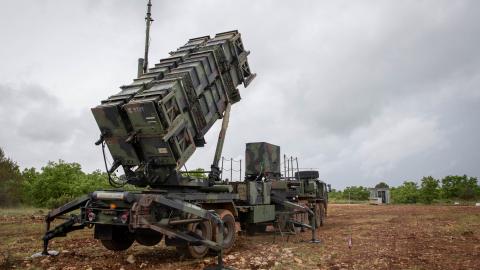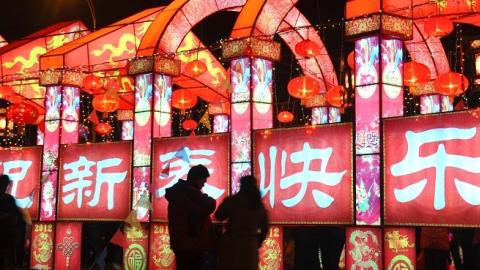Twenty-five years ago, the eminent scholar Tu Weiming encouraged us to think about "Cultural China," that is, the Sinophone civilization that is larger and, in the end, more consequential than the massive state that is headquartered in Beijing and now led by the Chinese Communist Party (CCP). So far as defining what it means to be "Chinese" in the modern world, it is Cultural China that has been and will continue to be the pacesetter—not the People’s Republic of China (PRC). Indeed, cultural production inside the PRC itself is no longer the servant of the CCP's heroic image of its own activities alone. As a practical political matter, moreover, cultural production in the comparatively smaller Chinese-speaking polities of Taiwan, Singapore, Hong Kong and elsewhere in the world has always been beyond the control of Beijing. While it is not yet fully a counterculture in open rebellion, Cultural China—both inside the PRC, and as it exists outside of it—is still enough to be an ongoing concern for the CCP regime, for it already complicates the monopoly on power that the Party wants for itself.
Most analyses of Sinophone Asia begin with the distinction between the "core," that is, the socially and culturally diverse Asian Mainland that is now ruled by the CCP regime, and the "periphery," which exists in the many Chinese-speaking societies and places beyond the Mainland. The interactions between the two are complex, and they have had important consequences across the centuries. Here, history is instructive. In the nineteenth century, self-strengtheners on the Mainland acquired ideas about nationalism and constitutionalism from the Sinophone periphery that ultimately led them to abandon the dynastic system. To free China Proper from the Qing/Manchu Empire that ruled it, Sun Yatsen's republican movement relied in 1911 on the patriotism and ideas of the periphery. Chinese who lived outside the newly established Republic of China (ROC) also played a role in institution-building and reform post-1912. Later on, Chinese outside of the core contributed important political and financial support to the Republic of China's resistance—when that government still controlled part of Mainland China—against Imperial Japan during what is known in Asia as the Great Pacific War.
Today, these relations between core and periphery have entered yet another phase, and they have begun to unsettle conventional wisdom about the future of Sinophone Asia as a whole. On the face of it, there should be no debate at all. After all, on one side is the PRC. The CCP regime rules over a population of 1.3 billion, has a gross national product in the trillions, the world’s largest hoard of foreign exchange, and a military that is getting bigger by the day. Taiwan, Hong Kong, Singapore and the larger Chinese-speaking Diaspora, even when taken together, would hardly seem much for a match for this behemoth. But this is not how it is now; indeed, it is not as it has been in modern times. In fact, although these other survivors in the century-long battle to define Chinese modernity may seem woefully mismatched vis-a-vis the PRC, their existence as conspicuous alternatives to the CCP's way of doing things was, and remains, very consequential.
In the modern era, Chinese who remained outside of the PRC have thrived and have kept ahead of their compatriots in the core. If, today, the Sinophone periphery has yet to convince proponents of the "Beijing Consensus" that, in politics, democracy is the true wave of the future, it has still made great strides in cultural and economic freedom that have placed it far in advance of what people on the Mainland enjoy. Thus, by every modern metric—political, financial, organizational, cultural—the polities on the periphery remind the larger PRC how far it must yet move in order to catch up with the rest of Cultural China and the rest of the modern world.
It didn’t always seem it would turn out this way. After World War II, the Republic of China (ROC) in power on the Mainland was a founding member of the United Nations, the World Bank, the International Monetary Fund, and what is now the World Trade Organization. The ROC aspired to be, and was welcomed as, a key pillar of the then emerging international security and commercial order. However, the PRC, founded in l949 after it drove the ROC from the Mainland, opted instead to join the so-called “socialist camp” led by Stalin’s Soviet Union, which had duped many into believing that it was the future. This was a fateful decision and, within thirty years, the CCP-led regime had brought ruin to Mainland China and itself to the point of collapse. In a startling reversal, the Party decided to join the world economy that it had once spurned and to reorganize the PRC economy in shameless emulation of the Sinophone periphery and Asian economies it had once mocked. Deng Xiaoping's reforms would never have gotten off the ground were it not for the presence nearby, and the support of, the real "Chinese" successes in Taiwan, Singapore, and Hong Kong as well as the other parts of "Confucian Asia," including South Korea and Japan.
For some, it has once again become fashionable to predict that the CCP is going to rule Asia but, at the moment, it does not appear to be much of an agenda-setter. Indeed, the people who should know best are betting against it. For example, many of the PRC's newly rich beneficiaries of the existing dispensation want out. Their patriotic sentiments or their feelings of gratitude to the Party seem less in evidence by the day. They are smuggling huge amounts of money out of the country; they buy safe houses in British Columbia and California; they also have other than PRC passports tucked away. There are also prominent, culturally creative, people on the Mainland who may not necessarily want to leave it, but who certainly do not want to see the PRC continue many of its politically and culturally repressive practices either. In particular, distinguished writers and artists do not want to be harassed by the PRC’s Ministry of Public Security or be imprisoned like the Nobel Laureate Liu Xiaobo. And, as we are learning every day, there are millions living a more mundane life in burgeoning cities and rural villages who also may not want to leave Mainland China but who nonetheless take increasingly pronounced exception to its current mode of governance.
The CCP leadership knows that the Deng-era reforms have run their course. Already, the Party is spending enormous sums on “stability maintenance” and the systematic suppression of free cultural production at home, just as it is once again looking to overseas Chinese for new ideas about how to shore up its rule. But the Sinophone periphery's demonstrated power to make and un-make the political order on the Asian Mainland is also a source of ongoing fear for the Party, something that helps explain Beijing's ongoing strategic obsession with it. Indeed, the CCP's efforts to control the periphery and bring it to heel are well-known. But as the Party is learning right now on the streets of Hong Kong, this is neither simple nor is it easy.
Each of the peoples and places on the Sinophone periphery has had their own historical connection to the core and their own experience with modernity. Singapore and Hong Kong, for instance, were British colonies for a long time; as such, they absorbed the British political and economic tradition. Both of these overseas polities, along with the ROC that came to be established on Taiwan, also emerged as the modern custodians of Cultural China and of the Chinese Confucian political tradition, at a time when the PRC regime was bent on destroying it. It was within these polities that an alternative Chinese modernity to the one implemented by the CCP on the Mainland was been worked out.
Singapore is now independent and Hong Kong, since 1997, has been a unique part of the PRC. Nonetheless, a powerful pro-democracy movement, un-intimidated by Beijing’s threats, has taken hold in Hong Kong, a powerful reminder of Beijing's inability, for all its wealth and power, to win over hearts and minds. The courage shown by Hong Kong citizens in resisting the police state and standing for their basic rights to govern themselves is remarkable, especially given memories of the June 4 Massacre. These protests are reverberating across Sinophone Asia, and through this, the periphery is giving inspiration to the other peaceful, citizen-based movements on the Mainland initiated by people who also want free culture and the Rule of Law for themselves.
Some in the CCP would prefer to take Singapore's one-party system as a model for the reform of the PRC, but this, too, presents problems for the Party. The particular governing arrangement that accounts for the success of the city-state is not readily implementable by the CCP on the much larger Asian Mainland. The problem is not simply one of scalability—a Singapore-style blend of modern openness and genuine Confucian accountability and service to others would, to be sure, bring vast improvements to the lives of those inside PRC, but such changes would also threaten the CCP’s pursuit of a monopoly on power. The Singapore government has little to fear from its citizenry’s cosmopolitan outlook and free commerce and cultural exchange with the wider world, whereas the CCP regime, because of its retrograde nature, is going to extraordinary lengths to try to control and restrict the cultural and economic relations between the Chinese core and the wider world.
In Taiwan, the CCP regime faces an even deeper set of challenges. The ROC, after all, has been a multi-party, constitutional democracy since 1987, and thus represents a clear alternative to the PRC within the context of Cultural China. Indeed, Hong Kong's democracy movement has clearly learned from Taiwan’s own citizen movements. Moreover, large numbers of people on Taiwan have long disputed the very idea that they are "Chinese" at all, and the democratic polity has allowed that once-repressed sentiment to become a wholly legitimate and very potent political force. This is in part the result of the fact that, strictly speaking, Taiwan was a part of "China" for only five years, from 1945 until l949. Before that, it was a colony of Japan for fifty years and, before that, it was part of the empire made by the Manchus, not part of “China.” Today, the overwhelming majority of Taiwan’s people is committed to their own democracy, and they want no part of "reunification"—especially with a regime in Beijing that is increasingly anti-democratic and brutal. More to the point, the deep structure of Cultural China is being reconfigured in Taiwan; the citizens of Taiwan want to be Taiwanese, not
Chinese.
This, then, is the context of today’s debates inside Sinophone Asia about the future of Greater China. In this, the experiences and aspirations of Chinese living on the periphery are likely to become increasingly relevant. Indeed, as the scholar Tu once predicted, "the transformative potential of the periphery is so great that it seems inevitable that it will significantly shape the intellectual discourse of Cultural China for years to come…The meaning of being Chinese is basically not a political question; it is human concern pregnant with ethical-religious implications."1
The Beijing regime surely knows that Taiwan presents a different, far more robust, and sustainable, model for the modern Chinese-speaking world than does the PRC, and thus the CCP rightly fears that Taiwan could prove to be a source of ideas for politics and governance on the Mainland. However one assesses the prospects of this, we certainly know that, at critical times in modern Chinese history, the Sinophone periphery has intervened dramatically in Mainland affairs and exercised an influence well beyond what customary analyses would have predicted. This alone suggests that the balance of power in Sinophone Asia could well be on the verge of another great shift, and that those on the periphery will once again intervene and dramatically transform the core.
If we look at the future of Mainland China and of Asia from this perspective, the democracies of Asia, including Taiwan as well as its allies Japan and the US, have an opportunity to enrich our foreign policies and security strategies by drawing on the cultural, intellectual, and political resources of the periphery that have been too long neglected. For instance, at the moment, the Beijing regime, responding to the discrediting of Communist ideology around the world and inside Mainland China itself, is trying to appeal to Chinese traditions, especially Confucianism, as a way of legitimizing its one-party dictatorship and extending its control across Maritime Asia. To be sure, this is an outrageous claim. It needs to be challenged by vigorous and sustained public advocacy—not only, but especially from within Sinophone civilization itself. Confucian teachings are far more supportive of responsible governance than they are of arbitrary repression. In fact, in Confucian Asia, it is the democracies of Taiwan, Japan, and South Korea that are the real innovators and leading examples of how the “Confucian tradition” exists in the modern world.
By extension, the success of Asia’s democracies should be the basis for a broad coalition of countries co-operating on behalf of securing the regional peace. The alliance that is forming is impressive for its diversity—Japan, South Korea, the Philippines, India, Australia, New Zealand, perhaps others, and of course Taiwan. As for how Taiwan should be seen in this new security arrangement, the alliance in Asia would do well to remember not only the strategic significance of the island nation but, moreover, its cultural and political significance in the context of Cultural China. In the twentieth century, bogus arguments about linguistic compatibility and shared cultural history were exploited by European and Asian tyrannies for the purposes of imperial aggrandizement, just as they are exploited by Vladimir Putin today. And yet, deference is afforded to comparable bogus claims made by Beijing when those claims should be vigorously contested instead. In his teachings on how to make a peaceful order out of insecurity, Confucius is famous for advocating the "rectification of names," that is, calling things by their right name; today, Beijing’s imperialistic ambitions should be called by their right names, just as the Asian alliance should look to support the Sinophone periphery, Taiwan included, in enlightening a peaceful and more humane way forward for the diverse peoples on the Mainland.
